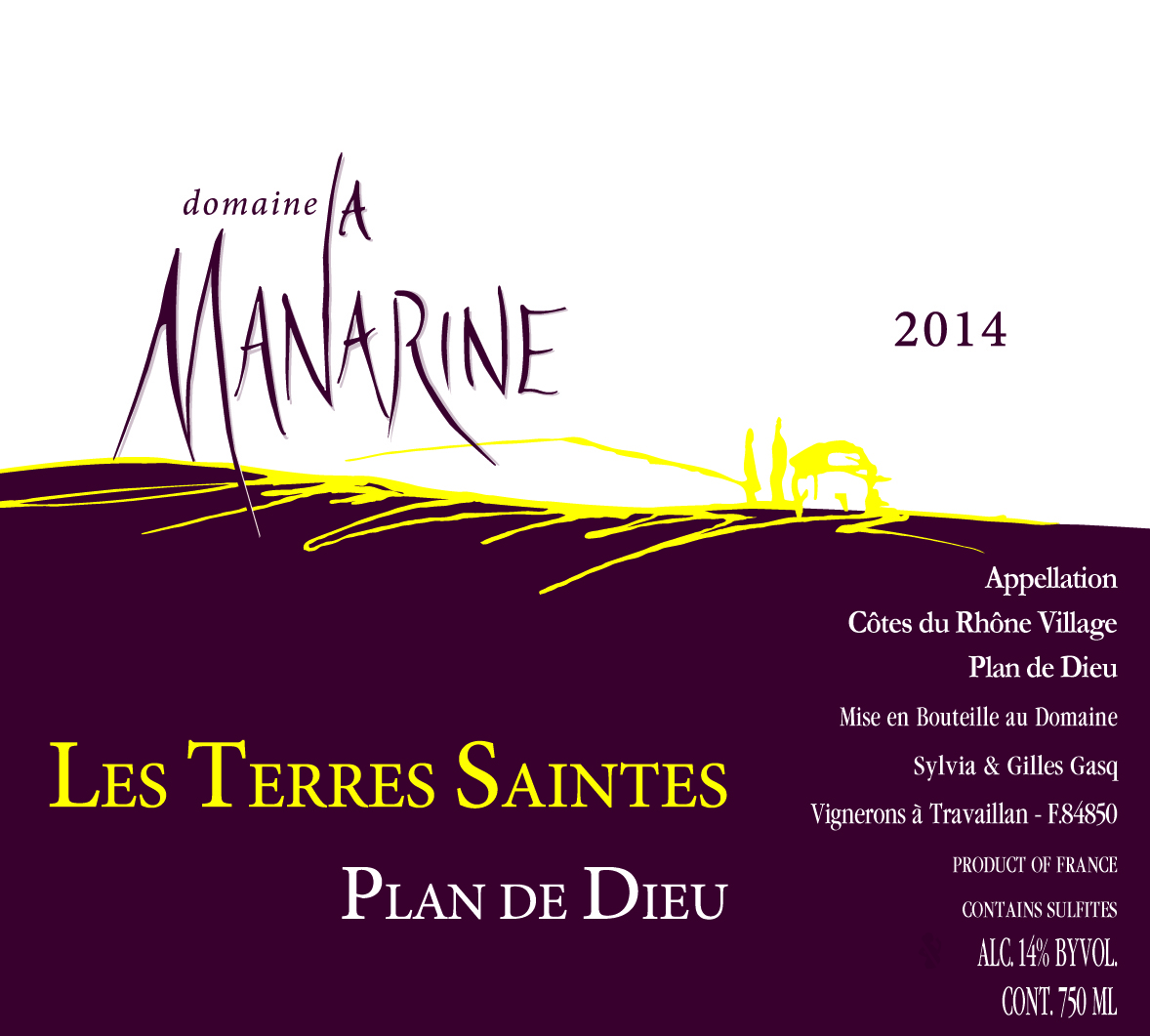
Domaine La Manarine
Wines
Travaillan, Plan de Dieu
Côtes du Rhône Blanc
The sole white wine of the estate is produced from a blend of Clairette and Bourboulenc. The grapes are fermented in temperature-controlled cement tanks and are left in contact with the fine lies for several months. Bottling takes place in early spring of the year following harvest. Production is quite limited; 2,400 bottles are reserved for our use in the USA.
Côtes du Rhône Rosé
The rosé from Manarine carries a light tint and is vinified completely dry. It is usually a blend of Grenache (60%), young vines mourvèdre (20%) and Syrah (20%). Like the white wine, it is fermented and aged in cement vats and is bottled in the early spring following harvest. We purchase approximately 6,000 bottles per vintage.
Carignan, Vaucluse Rouge
Carignan is susceptible to over-production, particularly when the vine is young, compromising quality. Working with Carignan, it is essential to control yields to insure quality, so old bushvines are a must, as is the case with this new wine from Gilles Gasq. With a deep color, acidity and plenty of tannins, the fruit is savory and herb-streaked. Those of you who loved the Counoise that Gilles helped make at Domaine Monpertuis in Châteauneuf-du-Pape will find this a worthy replacement.
Côtes du Rhône Rouge
The standard bearer of the domaine is the Côtes du Rhône Rouge produced from the younger (but not young) vines (average 35 years old) of the estate. This wine is 100% Grenache and produces a classically spicy, full-bodied wine that speaks clearly of the “garrigue” of the region. The grapes are destemmed before the fermentation and the cuvaison is on the order of three weeks duration. The wine is bottled without filtration after twenty to twenty-four months of “élevage”. The Manarine Côtes du Rhône is our essential wine in this category. We now purchase 15,000 bottles per annum.
Côtes du Rhône Villages Plan de Dieu, “Les Terres Saintes”
This prestige cuvée of Manarine is produced from a selection of lower yielding old vines (average 55 years old). Gilles destems the entire harvest and uses cement tanks for fermentation. Structured as a “vin de garde”, it benefits from a longer “cuvaison” of 30 days or more. During the “élevage” both red wines go through “delestage” and “remontage” (a technique whereby the tank is completely emptied and the wine pumped back into it on top of the layer of skins) to extract color and flavor. Once the fermentation is complete, the wine is racked into cement vats for aging but 20% is also aged for 8 months in “demi-muids” (600L barrels). The wine is bottled without filtration after a 24 month “élevage”. On average, 4,800 bottles are destined for the US.
Châteauneuf-du-Pape Rouge, “Pied de Baud”
Comprised of 100% Grenache with an average age of 45 years, from adjacent parcels totaling 1.5 hectare. While they are nestled side by side, the two parcels are distinctly different: “Pied de Baud” has a sandy based soil, while “Cabrières” is stonier, riddled with the large galet stones for which Châteauneuf-du-Pape is known. Situated in the northern reaches of the appellation, these two sites are much cooler than the rest of the appellation, making a wine that is fresher and considerably less tannic. The grapes for this wine are partially destemmed (about 50%) and are fermented in stainless steel tanks for one month and aged in a combination of stainless steel and large oak barrels for 18 months before being assembled and bottled.







